1 Introduction
1.1 Definition of electromechanical systems
The world is full of electromechanical equipment and systems. They are contained in everything related to land, maritime and air transport; equipment used in mining, installations in oil & gas, petrochemicals, pharmaceuticals, medicine, entertainment, communications, as well also hydroelectric, thermal, nuclear, wind, solar power plants; industrial, residential, aerospace equipment, robotics, and mechatronics.
When we talk about electromechanical systems, we refer to equipment that is composed of a large number of elements such as:
- Generators, motors, electrical transformers;
- Hydraulic pumps, fans, compressors, hydraulic presses;
- Valves, filters, level gauges; temperature, pressure, flow measurement devices;
- Screens, conveyor belts;
- Control devices, such as circuit breakers, relays, limit switches;
- Drilling machines, planers, domestic sanders; machine tools for the industry in general;
- Motorcycles, cars, trucks, trains, planes;
- Special equipment for the road industry, oil & gas, mining.
So, there are many industries, and all of them require electromechanical systems with the appropriate operation conditions, reliability, durability, and interchangeability. These are very important for developing companies and countries to do the different projects they are involved in successfully. All these electromechanical systems must have “quality”. Quality is an inherent property of anything that allows it to be valued with respect to any other of its kind.
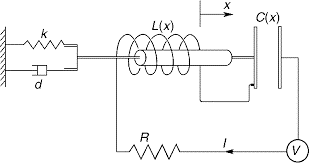
Figure 1. Sketch of an electromechanical system model with a single degree of freedom mechanical motion, Source: http://www.eng.uwaterloo.ca/~jzelek/teaching/syde361/0066ch07.pdf
Although we are referring to electromechanical systems, there is also an increasingly important overlap with mechatronics systems. The latter is a multidisciplinary branch of engineering dedicated to the unified design of mechanical and electrical systems. Mechatronic solutions are achieved through the combined use of robotics and electronic engineering, computer science, telecommunications, as in radars (Radio detection and ranging) and GPS (Global Positioning System).
The word quality refers to the set of inherent properties to an object that gives it the ability to satisfy particular needs, whether these implicit or explicit. Quality is applied to a service or a product. In turn, this product provides a valuable service or status and is finally evaluated or weighted according to the perception that the client (consumer) has of it.
1.2 Definition of quality
The supplies of goods and services are defined under three basic concepts: Price, Term and Quality. The price and term are very explicit characteristics, that is to say, with objectivity. On the other hand, quality has explicit and implicit components, which imply objectivity and a good dose of subjectivity. The client has the “right” to choose two of the three variables; the provider, the remainder.
We could also say that price and term are variables that can be very well specified and of short and medium-term resolution in the project’s span. Quality is also typically very well defined, but there is always a percentage of implicit concepts that lead to a subjective nature and tend to be confirmed in the short, medium, and long term in the project’s useful life or use of good or service.
The definition of quality may vary. It is a concept with some subjective or circumstantial features. It can still be defined as: “Quality is a property that a thing or object has, and that defines its value, as well as the satisfaction it causes in a subject.”
Organisations and experts in the world of quality give a widely accepted definition (ISO 9000 Standard): “Quality is the degree to which a set of characteristics inherent to an object (product, service, process, person, organisation, system or resource) meets with the requirements.”
Other definitions include:
“Quality is the set of functions and characteristics of a product, process or service that give it the necessary capacity to satisfy the needs of a certain user.”
“Quality is the set of attributes of a product or service that provide consumer satisfaction.”
“Quality implies all those characteristics of a product that the user recognises that they benefit him.” (Joseph M. Juran)
“Quality is a predictable degree of uniformity and reliability at low cost, suited to market needs.” (Edwards Deming)
“Quality is an effective system to integrate the quality improvement efforts of the different groups of an organisation, to provide products and services at levels that allow customer satisfaction.” (Armand V. Feigenbaum)
“Quality as the set of properties and characteristics of a product or service that gives it its ability to satisfy explicit or implicit needs.” (ISO 8402)
Finally, the ultimate goal of quality is “customer satisfaction”. What a customer wants and is willing to pay determines quality. It is a written or verbal commitment with a known or unknown consumer in the market.
2 Managing Quality
2.1 What is quality management?
A Quality Management System is based on the principle of continuous improvement. When implemented effectively, it is possible to sustainably increase the economic value and quality of what is offered to customers. Implementing a sound quality system implies:
- Satisfy customer expectations
- Improve process control
- Ensure that each product is identical, so there are no variations in performance.
- Increase market share
- Reduce waste
- Generate lower costs
To remain firm and competitive in the market and keep up with technological advances, investing in continuous resources through quality management skills is necessary. In this way, plan, organise, control and manage processes more efficiently. The focus is on classic production goals: reducing time and costs while increasing quality.
Achieving a standard of excellence is not an easy task for managers. For this reason, it is essential to use analysis tools, which facilitate the entire flow of process management and information that helps decision-making. Quality management implies supervising all the activities and tasks that must be carried out to maintain the desired level of excellence for the company involved, which translates into the good or service it offers to the market. This includes determining a quality policy, creating and implementing quality planning, quality assurance, quality control, and continuous quality improvement.
It should be understood that the user is the one who defines the quality, and the company or supplier is responsible for implementing a quality management system that allows it to meet these requirements. This quality management system is a formal process used to review a company’s operations, products, and services, intending to identify areas that may require quality improvements. This is needed in all areas of commercial activity, regardless of the size of the institution, company or market.
We can say that quality management can be done through two major pathways: Total Quality Management (TQM) or Quality Management Systems (QMS).
2.2 Total Quality Management
Total Quality Management, or TQM, is a tool with a customer focus and offers continuous processes. Among the benefits are the optimisation of resources, the reduction of costs and the increase in equipment supply through transparent communication. The goal is to improve operations for a more efficient operation.
Initially, TQM arose out of manufacturing, but its popularity caused it to spread to almost every industry sector. TQM is a management approach to long-term success and focused on improving processes to improve through customer satisfaction, often following the Deming cycle: Plan, Do, Check and Act (PDCA).
TQM was often managed by individuals with an ad-hoc concept rather than implemented in entire organisations and under an international standard. It got widespread attention in the late 1980s and early 1990s before being overshadowed by ISO 9000, lean manufacturing, and Six Sigma. With TQM, the ad-hoc cross-functional teams were responsible for identifying and addressing immediate problems.
In general, Total Quality Management is based on what is known as the Seven Quality Tools, a set of charting and graphing techniques to help identify quality problems. The tools used in TQM are fishbone diagram/Ishikawa chart; check sheet template; check box; histogram; Pareto chart; scatter plot; and stratification diagram.
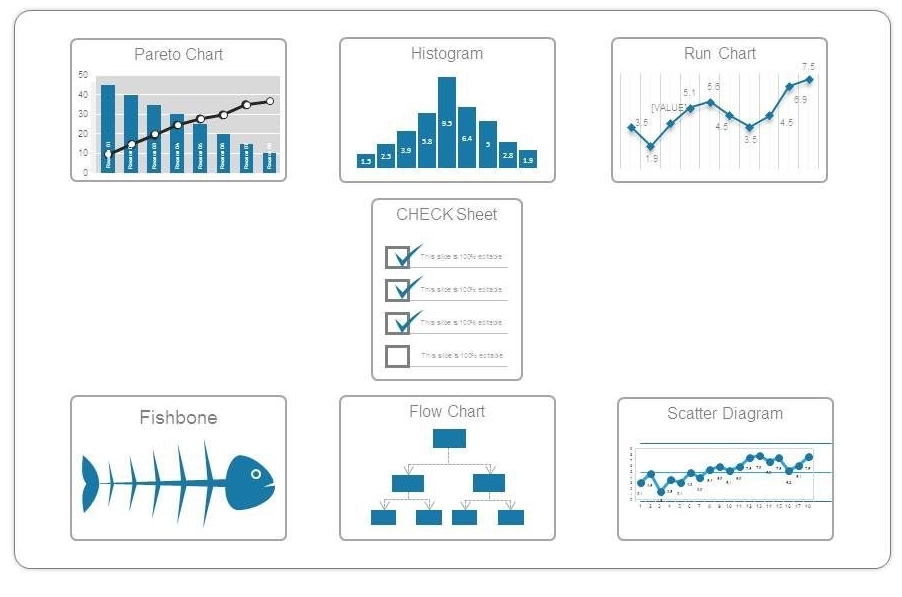
Figure 2. Seven tools for total quality management. Source: https://www.slideteam.net/7-tools-for-total-quality-management-ppt-powerpoint-guide.html
Although TQM was very popular, its reputation has waned as more organisations recognise the benefits of a QMS. While implementing TQM still has its rewards, it doesn’t have the authority it once did. Total Quality Management has helped companies a lot, but unfortunately, there is no TQM standard, such as ISO 9000.
When selecting a company as a supplier, the buyer should always expect a quality system of the ISO 9000 type; specify it as part of the terms and conditions. ISO 9000, since a TQM system may not be effective as a quality management tool.
2.3 Quality Management System
The Quality Management System, or QMS, is intended to validate all the processes that occur within the company. From the standardisation of flows, in search of continuous improvements, the collaboration between teams and the centralisation of information. With this, decision making gains more reliability, thanks to performance indicators.
QMS also helps to improve communication between teams, integrates areas, reduces costs, optimises time, and contributes to the company’s image. ISO 9000 quality standards improve quality by providing a model for an international standard that all companies can follow and everyone recognises.
A Quality Management System (QMS) is a set of clearly defined standards for business processes aimed at delivering products and services to a high and consistent standard. An effective QMS will be aligned with a monitoring plan and continuous improvement, as well as a commitment to quality.
A QMS involves the entire organisation, aligning operations with the exact requirements and standards to provide consistency and quality at all company levels. Having such a system implemented implies that organisations are audited by a certification body that guarantees that their quality assurance procedures comply with the standards and grants them a certification such as ISO 9001.
2.4 Quality Assurance (QA)
Quality assurance is a set of planned and systematic activities to ensure that process variations are identified, evaluated and improved, meeting customer requirements for products or services. This intentional and systematic pattern defines all the actions necessary to provide adequate confidence that the product or service optimally meets customer expectations.
Work done to ensure quality is built into work products. This is materialised by: identifying what quality means in that context; specifying methods by which the manifestation of quality can be guaranteed; and specifying ways in which it can be measured to ensure conformity.
The differences between Quality Control and Quality Assurance are:
- Quality assurance is that part of quality management focused on providing confidence that quality requirements will be met. This confidence in quality is on two fronts: internal, within the company’s control, and external, related to clients, government agencies, regulators, certifiers and third parties.
- Quality control is that part of quality management focused on meeting quality requirements. While quality assurance is related to how a process is carried out or a product is manufactured, quality control is where the inspection occurs in quality management.
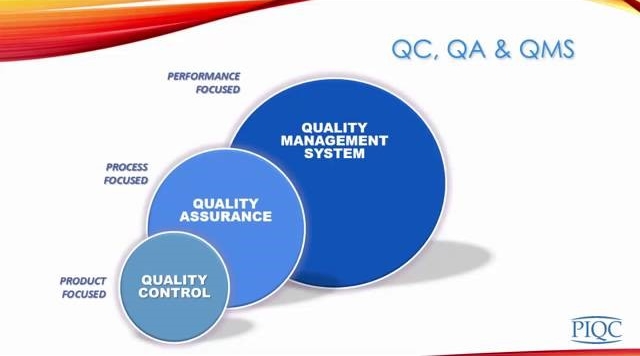
Figure 3. QC vs QA vs QMS. Source: https://youtu.be/wWo4XyQAxc0
The PMBOK Guide (Project Management Body of Knowledge) defines the Quality Assurance process as the process of auditing quality requirements and the results of quality control measurements to ensure that appropriate quality standards and operational definitions are used. On the other hand, the PMBOK Guide defines the Quality Control process as to how the execution of quality control activities is monitored and recorded to evaluate performance and recommend changes necessary.
2.5 Quality Control (QC)
Quality control is a way of verifying the standard of a product or service during its manufacturing process and reducing the probability of inserting faulty products into the market. It demonstrates the conditions that a product or service must meet to be consumed or used by the user or customer. Quality control is the regulatory process through which we can measure the actual quality, compare it with the standards and act on the difference that may appear.
Quality control is called the set of techniques and procedures used by management to guide, supervise and control all the different stages until a product or service of the desired quality is obtained. All members of a company are responsible for quality control. Regardless of the work carried out by a person or a machine, whoever performs the work or operates the device is the one who can most effectively control the quality or report the impossibility of achieving the desired quality so that corrective measures can be taken.
Quality control is essential in any industrial process as it allows monitoring of production actions and eliminates errors, faults or defects.
Implementing quality control requires diagnosing the critical stages that must be reviewed in the production process and an instrument for evaluating these stages. However, quality control can be done by anyone in the organisation and at any time. This means that quality control is the responsibility of all those who work in the production and goods and services, warning errors, warning about failures or processes that are being executed incorrectly.
2.6 Continuous improvement (CI)
The idea of Continuous Improvement (CI) began progressively in production companies in 1950. Over time, continuous improvement tools or strategies, also called Continuous Improvement Strategies or Continuous Improvement System (CIS), have been developed, such as Kaizen, Lean Manufacturing, Six Sigma, 5S, Theory of Constraints, Standardization, Total Productive Maintenance, Theory to Solve Inventive Problems, among other.
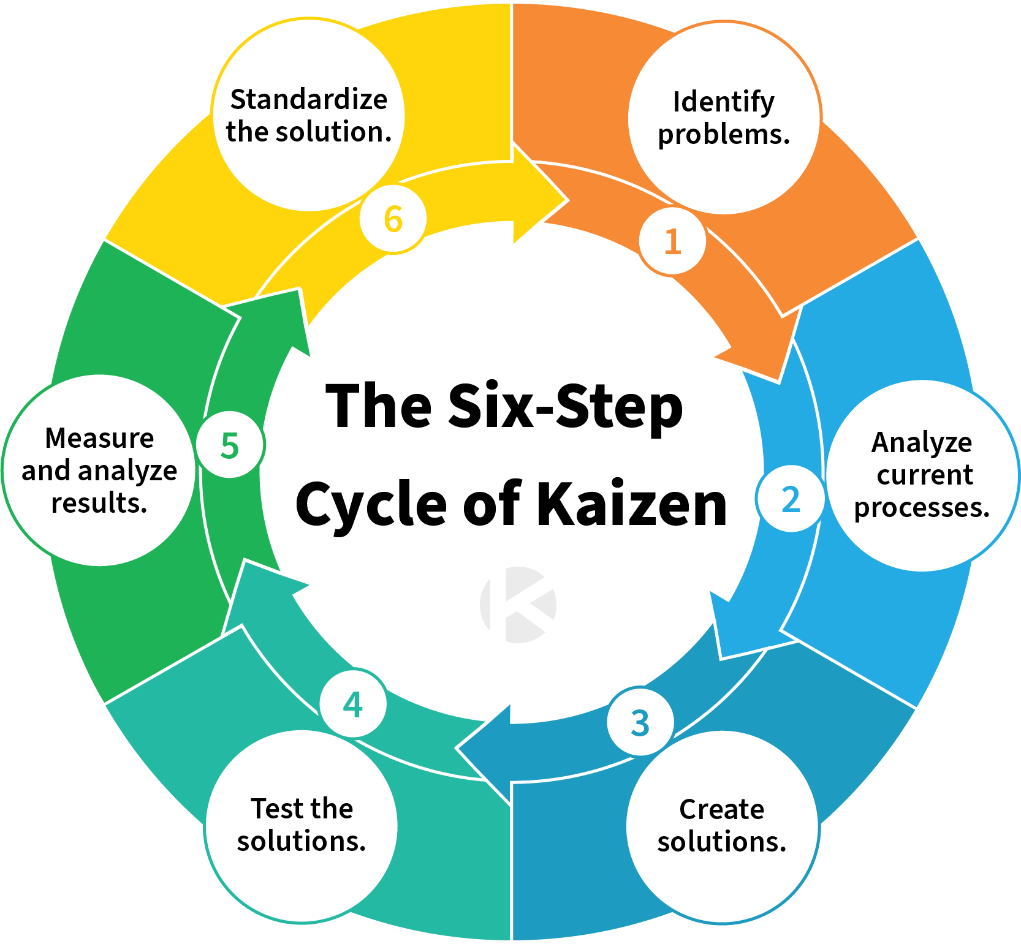
Figure 4. The six-step cycle of Kaizen. Source: https://i.pinimg.com/originals/91/8a/6c/918a6cc4555abb95699eec15913f6b43.png
International standards such as ISO 9001 and the result of the development of Standardised Quality Management Systems (SQMS), focusing on continuous improvement as one of the main tasks, have played a crucial role in promoting and disseminating continuous improvement strategies during the 1980s.
Continuous improvement is a continuous effort to improve the products, services or processes of the organisation. These efforts can be gradual — seeking “incremental” improvement over time — or by shock — pretending a one-time specific “breakthrough” upgrade in the short term.
In the late 1990s, the developers of ISO 9001: 2000 debated the word “continuous.” The ISO Technical Committee and regulatory representatives finally decided that “continuous” could not be a management criterion, as enforcing meant that an organisation had to improve minute by minute. In contrast, continuous improvement implies gradual improvement or improvement in segments.
In practice, setting objectives and finding opportunities for improvement is a continuous process through audit findings and conclusions, data analysis, reviewed by management, and generally leading to corrective or preventive actions. Continuous improvement (CI) is the precondition for obtaining and maintaining competitiveness in any business. Process and resource improvement are significant, and in many cases, can be critical to ensure product quality at reasonable operating costs, generally the lowest possible.
The reasonable use of each of these tools reduces losses attributed to waste and improves the quality capabilities of individual processes and resources.
LM and TOC are more helpful in identifying and eliminating wastes that do not add value to the product, either as Non-Value Added (NVA) and as Business Value Added (BVA). Six Sigma and Kaizen contribute to the capacity of the processes to add value to the Value Added (VA) products.

Figure 5. Impact of quality strategies on value creation and waste reduction. Source: DOI: 10.24425/119398
Of all the Continuous Improvement System (CIS) used in practice, the most efficient, for more than 15 years, has been considered a combination of Lean Manufacturing and Six Sigma. It is well known under the name Lean Six Sigma (LSS).
2.7 Quality indicators
They are a tool to control quality and are tangible and quantifiable, which allow evaluating the quality of processes, products and services to ensure customer satisfaction. That is, they measure the level of compliance with the established specifications. The management indicators measure, globally, the final result of the activities of the companies, based on a standard, which responds to the objective quality level that the company expects and wishes to achieve.
The quality indicators must meet specific characteristics:
- Realistic, directly related to the dimensions or significant parameters of the quality of the process, product or service,
- Specific, they should be few, but sufficiently representative of the parameters or characteristics that are significant or that require constant management supervision,
- Visible and easily representable in the form of easily interpretable graphics,
- Accessible to personnel involved in control activities,
- Sensitive to variations in the parameters being measured.
There are many and varied reasons for implementing a system of indicators, the most notable of which are:
- Assess the correct application of the resources consumed by the different activities and the adequacy of their results to the requirements.
- Control and improve processes.
- Guarantee the expected results.
- Maintain quality standards.
- Improve the level of service to achieve greater customer satisfaction.
- Guide improvement activities through the implementation of preventive actions and control of the results obtained.
- Be able to take the corresponding corrective and preventive measures. Los indicadores de gestión evaluan los procesos, productos y servicios
The quality indicators influence the management indicators, so they are essential for the company’s management to propose global actions. These arise those of the management, those of departments or a specific area.
There is no fixed rule regarding the number of indicators to consider. However, those deemed necessary should be used to maintain a clear and unequivocal view of the status or situation of the activity to be controlled.
For accurate monitoring and understanding of the quality indicators throughout the company, the following recommendations are to be acknowledged:
- Use easily interpretable graphical indicators.
- Place the indicators in visible places within the areas where the different activities are carried out.
- Indicators should be managed by those responsible for the processes or activities to be measured.
- Avoid false alarms as a consequence of an oversizing of the value of these indicators.
2.8 Quality certification
The quality certificate is a means of verifying the processes that a company has developed to develop or produce its products and services and certifies compliance with appropriate quality standards to be offered to consumers. These can adhere to a standard or be specific to the institution that issues the certificate.
International quality certificate, an institution that has established quality standards, is, for example, the International Organization of Standardization, where we have, among others, ISO 9001, which emphasises quality management for the production of goods and services.
It should be noted that the companies that undergo the review of their processes to obtain this certificate do so voluntarily since they are international reference standards that provide guarantees on their product management and not a legal, regulatory requirement.
The quality certificates are voluntary and applied by entities outside the company, independent and autonomous. They must ensure compliance with significant quality parameters that are transversal to economic and industrial activities.
Some of its characteristics:
- They are applied to a specific process related to the elaboration or production of goods and services.
- They adhere to one or more quality standards.
- They provide recommendations if the submitted institution does not approve the quality management processes.
- They extend for a set period, which is why they must be monitored from time to time.
- They indicate the data of the certifying institution.
Benefits of having a quality certificate:
- Quality certificates provide guarantees to companies and reliability to their clients, making them an excellent tool to boost business prestige and reputation.
- Certificates allow companies to implement continuous improvement processes in their organisations and thereby position themselves by the quality of the products they offer in the market.
3 Quality in the Heavy Industry
The engineering of these systems starts from a large-scale problem complexity. It progresses to structural analysis and detailed analysis of the partitioning process until critical or interesting questions are answered. This decomposition process is called Work Breakdown Structure (WBS).
This opening of tasks is materialised in all phases of a project, which define its useful life. These phases are as follows:
- Feasibility study
- Concept design
- Front-end engineering design (FEED). Conducting an engineering design study to control project expenses and thoroughly plan a project before submitting a reliable offer.
- Bidding and tendering
- Engineering, procurement, and construction (EPC)
- Detailed engineering
- Procurement
- Construction
- Testing, commissioning, and handover
The quality management of the articles/products supplied by the supplier is carried out as stipulated in the purchase contract according to the quality control specifications of the buyer. Construction projects are constantly increasing in technological complexity.
In addition, construction customer requirements are increasing. As a result, construction products (as in oil and gas projects) must meet various performance standards and satisfy the customer. Therefore, to ensure compliance with the client’s specifications, it has become the responsibility of the designer to evaluate the requirements in terms of activities and their relationship and comply with health, safety, and environmental regulations when designing and supplying any good, product or service.
There are innumerable processes that make up the construction process. To conveniently manage and control the project at each stage, the construction project life cycle is divided into several phases, which helps to understand the entire project management process.
To manage and control the management of projects and their activities at different levels of various phases, and mainly to guarantee the completion in time and form of the project with economical use of resources, and thus specify a more qualitative, competitive construction project.
In the industries mentioned below, but especially applicable to the rest of the provision of goods and services, all the concepts already described apply. But to review concepts relevant to quality management, we list these criteria or tools:
- Classic Quality Tools
- Management and Planning Tools
- Process Analysis Tools
- Process Improvement Tools
- Innovation and Creative Tools
- Lean Tools
- Six Sigma
- Others
All this is translated in different ways in the other companies. However, in general, it is materialised in the Quality Manuals that they prepare and compose in the respective documentation, and for which the competent and independent bodies later audit them.
Among the documents that make up a Quality Manual, it is common to find (among others) the following:
- Document Control
- Record Registration
- Personal Safety
- Management Review
- Communication
- Continuous Improvement
- Job Descriptions
- Performance Evaluation
- Training and Competency Management
- Facilities Organisation
- Compliance with Legal Requirements
- Emergency procedures
- Sales and Contract Management
- Purchasing
- Subcontracting
- Identification & Traceability
- Project management
- Engineering
- Training
- Measurement and Controls
- Commissioning
- Safety Inspections
- Risk Analysis
- Calibration of measuring equipment
- Control of Non-Conformity
- Incidents and Accidents
- Internal Audit
- Customer Satisfaction and Complaint Management
- Handling, Packaging, Transportation
- Waste management
- Customer Property
3.1 Oil & gas
The oil and gas industry has mainly three sectors or three fronts of action: i) upstream (exploration, production and stabilisation of oil and gas); ii) midstream (transportation, storage, gas treatment, LNG production, regasification, pipeline systems); and iii) downstream (filtering, refining of crude oil, purifying natural gas, processing of oil and condensates into marketable products with defined specifications).
Oil and gas projects are process-type projects that produce different products to satisfy and meet the requirements of intermediate consumers and end-users.

Figure 6. A petrochemical facility. Source: http://www.petrochemicalrefiningsummit.com/
Generally, an oil and gas construction project comprises (civil) construction materials, structural materials, pipe materials, processing equipment, rotating machines, oil production equipment, process heating equipment, oil handling equipment and gas, oil and gas storage elements, equipment to treat polluted water and process wastewater, control equipment, pumps, compressors, electromechanical components, instrumentation and control, leak detection, fire and gas detection, security system, elements finishing and many other systems and equipment.
These usually are produced by other construction-related industries/manufacturers. According to their quality management practices, these industries produce products that meet specific quality standards or under the requirements of a particular project but must have quality management and meet customer specifications and international standards.
3.2 Mining
In mining, a wide variety of equipment is used and specialised in this type of industry, both for open-pit and underground work, among them we have: trucks, loaders, excavators, which are typically transported with containers or elevators to further processing.
In traditional surface and underground mining, hammers and chisels with picks and shovels are used. Mining carts are used to move minerals and other materials in the extraction process. The trays are used for mining operations, washing, but in general, it is required to excavate, transport or process minerals, rocks more efficiently.
As we also see here, a great series of electromechanical equipment such as excavators, backhoe loaders, loaders, skid steer loaders, dumpers, bulldozers, motor graders, road rollers, vibratory plates, pavers, cold planers, road work equipment, drilling rigs, core bits, drilling equipment, pile drivers, piling equipment, trenchers, jumbos drilling rigs, road headers, tunnel boring machines and equipment, demolition shears, hydraulic crushers, demolition equipment, mixer trucks, other concrete equipment, formwork equipment, scaffolding equipment, dump trucks, crushers, other open-pit mining and quarrying equipment, underground mining equipment, forestry harvesters, skidders, forestry forwarders, log loaders, landfill waste compactors, trailers, utility vehicles, tracks, other construction equipment material.
In all of them apply the techniques, tools and quality management that we have already observed.
3.3 Metalworking
Metalworking is where shaping and reshaping metals prevail to create medium and large scale objects, parts, assemblies and structures. It covers a broad and diverse range of processes, skills and tools to produce objects at all scales: from huge ships, buildings and bridges to distinct parts of engines and delicate equipment. It includes many technological processes and highly technical modern techniques such as machining, welding, laser, and robotics.
While diverse and specialised, modern metal machining processes can be classified into three broad areas: forming, cutting, or joining processes. Improved metal shops have a wide variety of general-purpose or specialised machine tools capable of creating complex and high-precision products.
As it has already been said, and it is understood, quality management is critical here as in all industries. The different tools that we have tried to make explicit, and many others, are always present to a greater or lesser degree in each type of industries and businesses.
4 Quality Assurance and Electro Mechanic
4.1 The role of Quality Assurance engineers
QA engineers are assumed to work on-site and participate on a team of engineers, design technicians, and testing staff to develop and help lead the spectrum of mission assurance activities required throughout the lifecycle of product development. They would also assist managers in quality management system development and supplier evaluations as needed.
Most often, their responsibilities include support tools development and testing activities through test witnessing and inspections, participating in formal and informal technical reviews, performing source acceptance inspections, reviewing and approving subcontractor plans, procedures, and
design documents, participating in Material Review Boards, eliciting root causes and corrective actions when appropriate, and providing various other quality assurance support tasks as assigned.
Graduates in engineering, physics, mathematics, or related field with knowledge and skills in the application of ISO standards, risk management, statistical process techniques, as well as familiarity and experience with other standards for reliability, quality assurance, and system safety, are particularly suited for this role in the
industry. Also, Quality Assurance practitioners should demonstrate a strong knowledge of requirements related to electromechanical systems; soldered assemblies, cable, crimp, and harness assemblies; dimensioning and tolerancing; measurement systems; metrology; ESD controls; non-conforming material control; identification and traceability; storage and handling; inspection systems; and fabrication of various products.
Quality Assurance in the electromechanical industry is a fast-paced environment with shifting and competing priorities and multiple discipline interfaces: program management, engineering, quality, science, configuration management, government quality representatives, among others.
4.2 Maintenance and Reliability Strategy Selection
Electromechanical equipment presents a maintenance challenge — the mechanical parts fail from use and abuse. In contrast, the electrical and electronic components may never fail during their service life but for events beyond human control, especially when something is damaged or someone is hurt. Thus, maintenance and reliability strategy selection for electromechanical systems, electromechanical equipment and components turns out to be imperative to attain quality.
So, how to do pragmatic maintenance on electromechanical systems and their components? This section will try to build up a case for a realistic approach going back to reliability and maintenance fundamentals. An electromechanical device is made of mechanical parts requiring electricity to work. Electromechanical systems involve a symbiotic collection of mechanical and electrical elements working together to deliver the necessary function. Electromechanical controls and equipment are commonly used in consumer products, control equipment, and industrial machinery.
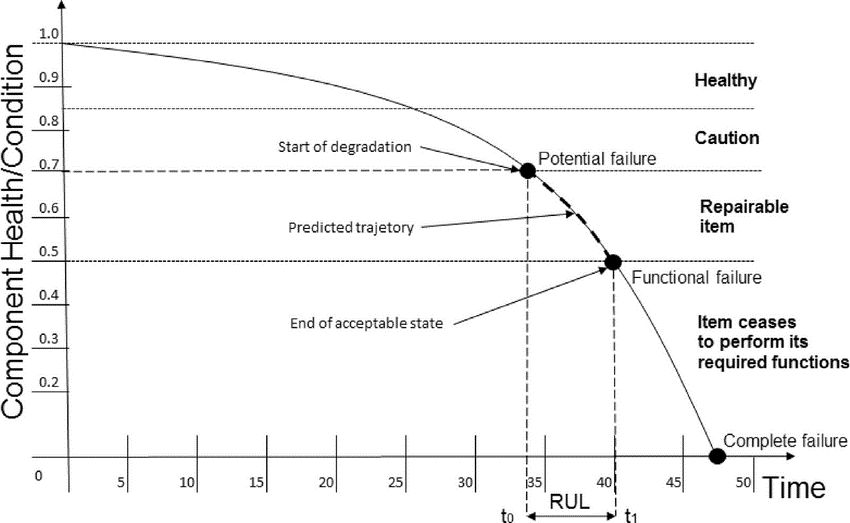
Figure 7. Behaviour of the remaining useful life of a mechanical component. Source: DOI: 10.1016/j.jii.2017.02.006
Mechanical component failures are likely to be wear-related if the equipment is used extensively or used harshly and age-related as the item gets old (e.g. corrosion, fatigue failures). Early life mechanical failures after installation and intrusive maintenance will most likely be a human error caused (though manufacturing errors, probably human factor caused, may also occur, as well as commissioning mistakes). Mechanical component failure during everyday operating life is likely to be due to either a significant overload event in a localised area of the atomic structure, the cumulative effect of many high localised stress incidents, or rapid component degradation from poor local environment factors, e.g. high temperature, dust, water, process chemical attack, etc.
Electrical component failures are likely to be random events due to voltage instability, current surges, excess temperature, contamination ingress, moisture ingress, circuit wiring errors, electric circuit component failures, along many other electrical and electronic item failure causes (including human error).
Maximising the reliability of electromechanical systems requires minimising the probability of their equipment and component failures. To successfully support an electromechanical system and deliver high reliability, operators need to adopt four practices:
- Impeccable quality control during installation, during intrusive maintenance and when commissioning,
- Always operate system equipment and components at steady, stable duty substantially below the design loads and stresses,
- Sustain the correct health of the immediate environment surrounding electromechanical items, and
- Proactive replacement of high likelihood-of-failure components before system failure rates rise.
The first practice to create highly reliable electromechanical systems requires that you have a quality assurance process. The QA aims to ensure electromechanical parts and assemblies meet the manufacturing and installation standards that produce the component reliability necessary for the system reliability you need. Along with that, you will need your people to follow the quality assurance process and improve it continually.
The second practice will minimise stress-related degradation. It needs equipment to be run steadily with no pressure surges, no temperature fluctuations, no vibration, no forceful impacts, and the steady control of all the other Physics of Failure factors that affect your electromechanical equipment.
The third practice requires that you have operating and maintenance procedures that keep the immediate environment around electromechanical equipment in the condition to maximise reliability during their service life. To which must be added the appropriate training of engineers, operators and maintainers, so they know and can faithfully deliver the necessary health standards for high electromechanical system reliability.
The last practice requires that you monitor electromechanical parts failure rates. When they start to climb beyond what you want, you replace all similar components that have suffered similar operating life conditions in a well-focused and well-planned maintenance campaign. This requires that you capture the replacement dates and reasons for replacing all the types of electromechanical parts in your operation and trend their failure rates by failure causes. Before the frequency of failure becomes too high, you replace all similar items suffering the same level of operational risk.
The four-factor approach described above, covering design, installation, operation and maintenance, will put you on the right path to long-life, high-reliability electromechanical systems.
Electromechanical equipment is used everywhere, and increasingly so. The most beneficial pragmatic maintenance strategy for electromechanical systems is keeping their components safe from the risks that cause their failure. Overriding that recommendation is the need for all activities you do in maintenance to make the most life cycle profit for the business.
5 Conclusion
There is no doubt that having a practical and viable quality management system to improve and supervise all areas of companies is a strategic and fundamental decision for companies and businesses’ lives.
Seeking an economic benefit and staying in the market is substantial for every company; therefore, achieving acceptable profitability, permanence and growth in the market is based on the great objective of total customer satisfaction of the customer and their expected loyalty.
All this can be achieved if our products and services adhere strongly to quality. Therefore companies and businesses must have first-rate quality management if we want to be successful and remain in the market in this highly competitive world.
Implementing a Quality Management System (QMS), such as ISO 9001, practical and robust, helps in all areas of the company and focuses on the critical areas of the business. The management processes established throughout your company will provide a solid foundation that will lead to increased productivity and profits. This, in turn, will improve customer acquisition and loyalty.
6 References
[1] Grabowska, M., Hamrol, A., Maletic, D., & Woll, R. (2019). Advances in Manufacturing II: Volume 3-Quality Engineering and Management. Springer.
[2] Neyestani, B. (2017). Seven basic tools of quality control: The appropriate techniques for solving quality problems in the organisations. Available at SSRN 2955721.
[3] Pries, K. H., & Quigley, J. M. (2012). Reducing Process Costs with Lean, Six Sigma, and Value Engineering Techniques. CRC Press.
[4 Mândru, L., Hârlab, A., & Camarda, A. L. (2009). Indicators used to measure the quality of products. Retrieved June, 12, 2019.
[5] Rumane, A. R. (2021). Quality Management in Oil and Gas Projects. CRC Press.
[6] Juran, J. M., & De Feo, J. A. (2010). Juran’s quality handbook: the complete guide to performance excellence. McGraw-Hill Education.
[7] Grosu, V., Anisie, L., Hrubliak, O., & Ratsa, A. (2019). Managerial accounting solutions: Lean Six Sigma application in the woodworking industry. A Practical aspect. Economic Annals-XXI, 176.
[8] Abuhav, I. (2017). ISO 9001: 2015-A complete guide to quality management systems. CRC press.
[9] Hamrol, A. (2018). A new look at some aspects of maintenance and improvement of production processes. Management and Production Engineering Review, 9.
[10] Jamnia, A. (2016). Design of Electromechanical Products: A Systems Approach. CRC Press.
[11] Lira Nunez, David & Borsato, Milton. (2017). An Ontology-based Model for Prognostics and Health Management of Machines. Journal of Industrial Information Integration. 6. 10.1016/j.jii.2017.02.006

 To all knowledge
To all knowledge